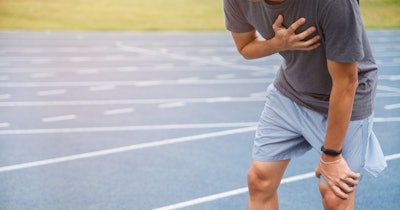
Maximal oxygen consumption, the capacity of the body to do aerobic work, provides an indicator of fitness and predicts heart disease and mortality risk. However, obtaining an accurate measurement requires expensive laboratory equipment; evaluating fitness is often limited to elite athletes due to the prohibitive costs and strenuous exercise involved.
Now, a research group at the University of Cambridge, U.K., has developed a method that leverages wearable sensors to directly measure overall fitness, eliminating the need for strenuous lab testing.
The group described the method on Thursday in a study published in npj Digital Medicine. Leveraging artificial intelligence (AI), the method does a better job of measuring overall fitness than consumer smartwatches and other such fitness monitors, according to the researchers.
Importantly, they noted, it measures overall fitness without the wearer needing to exercise.
"This method can be incorporated into any commercial wearable that is available right now," Dr. Dimitris Spathis, co-lead author and a researcher at the University of Cambridge, said in an interview. "We used a chest [electrocardiogram] movement device, but we are confident that our method can transfer to wrist-worn wearable devices."
Professional athletes test for maximal oxygen consumption, also known as VO2max, by providing measurements in the lab while they exercise to exhaustion. Heart rate response to exercise tests are also done in the lab but require exercise equipment, and strenuous exercise can be a risk to some individuals.
Most wearables provide metrics like heart rate, steps, or sleeping time, which are proxies for health. But these measurements are not directly linked to health outcomes, the University of Cambridge researchers noted.
“Cardiorespiratory fitness is an established predictor of metabolic disease and mortality,” the researchers wrote in the study. “Fitness is directly measured as maximal oxygen consumption … or indirectly assessed using heart rate responses to standard exercise tests. However, such testing is costly and burdensome because it requires specialized equipment such as treadmills and oxygen masks, limiting its utility.”
Specifically, the method developed by researchers uses machine learning to predict VO2max during everyday activity, without the need for contextual information such as GPS measurements.
The University of Cambridge researchers used wearable sensors to gather activity data from 11,059 participants in the Fenland Study -- a long-running public health study in the east of England. Participants wore wearable sensors that gathered 60 values per second continuously for six days.
The researchers also took measurements from a subset of 2,675 participants seven years later.
They used an artificial intelligence model -- specifically, a deep neural network -- to process and extract information from the raw sensor data and predict VO2max.
A third group of 181 participants from the UK Biobank Validation Study underwent lab-based VO2max testing to validate the accuracy of the algorithm.
The machine learning model had strong agreement with the measured VO2max scores at baseline with 82% agreement, and follow-up testing with 72% agreement.
The group noted that some smartwatches and fitness monitors claim to provide an estimate of VO2max. However, the algorithms enabling these predictions aren’t published and are subject to change at any time. As a result, it is unclear whether the predictions are accurate, or whether an exercise regime is having any effect on an individual’s VO2max over time, according to the Cambridge researchers.
By comparison, their model is robust, transparent, and provides accurate predictions based on heart rate and accelerometer data only, the researchers said. All of their algorithms and models are open-sourced and available to everyone.
Since the model can also detect fitness changes over time, it could be useful to estimate fitness levels for entire populations and identify the effects of lifestyle trends, they said.
“VO2max isn’t the only measurement of fitness, but it’s an important one for endurance, and is a strong predictor of diabetes, heart disease, and other mortality risks,” Dr. Soren Brage at Cambridge’s MRC Epidemiology Unit, a study co-author, said in a statement. “However, since most VO2max tests are done on people who are reasonably fit, it’s hard to get measurements from those who are not as fit and might be at risk of cardiovascular disease.”
Beyond predictions, the trained models can be used for the identification of subpopulations in particular need of intervention related to fitness, the researchers said.
“Cardio-fitness is such an important health marker, but until now we did not have the means to measure it at scale,” they wrote in the study. “Our findings could have significant implications for population health policies, finally moving beyond weaker health proxies such as the [body mass index]."
The group added, “The application of our work to other cohort and longitudinal studies is of particular importance as serial measurement of cardiorespiratory fitness has significant prognostic value in clinical practice. Small increases in fitness are associated with reduced cardiovascular disease mortality risk and better clinical outcomes in patients with heart failure and type 2 diabetes.”
Currently, the researchers don't have concrete commercialization plans for the method.
"Our work focuses mostly on the validation and the longitudinal aspect of fitness prediction (long-term changes in fitness levels) and hence it's an AI/software solution rather than a new wearable device," Spathis said, adding, "We are also sharing trained models and code so that other researchers can build on top of our ideas and further evaluate them."



















